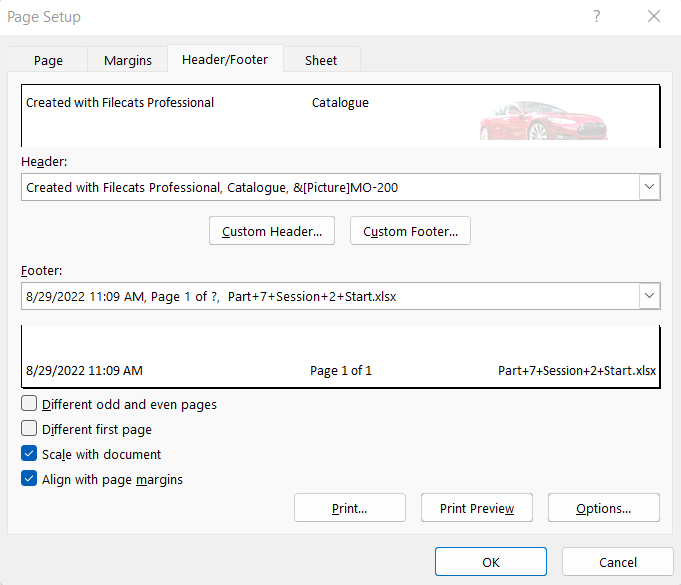Apply Footer to Every Excel Sheet Easily

In the world of data analysis and office management, Excel has stood the test of time as a go-to tool for organizing, analyzing, and presenting data. One often overlooked feature that can significantly enhance the usability and professionalism of your spreadsheets is the ability to apply a consistent footer across multiple sheets. This tutorial will guide you through the simple yet effective steps to add a footer to every Excel sheet, ensuring that your data presentations are not only informative but also carry a uniform, professional look.
Why Use Footers in Excel?

Before diving into the how-to part, let’s understand the significance of using footers in Excel:
- Consistency: Footers provide a way to add consistent information across all sheets, like page numbers, file name, date of creation, or disclaimers.
- Professionalism: A well-structured footer can enhance the overall presentation of your workbook, making it look more professional when printed or shared.
- Navigation Aid: For workbooks with multiple sheets, footers can help users navigate and keep track of page numbers, sheet names, or other reference information.
- Information: Include useful metadata about the document or project without cluttering the main data area.
Step-by-Step Guide to Adding Footers

Here are the steps to apply a footer to all sheets in your Excel workbook:
1. Opening the Page Setup Dialog

First, ensure you have your Excel workbook open.
- Click on the Page Layout tab from the Ribbon at the top of the Excel window.
- Under the Page Setup group, click on the Dialog Box Launcher (small arrow in the bottom-right corner).
- This opens the Page Setup dialog box.
2. Setting Up the Footer

In the Page Setup dialog:
- Navigate to the Header/Footer tab.
- Click on Custom Footer.
- Here, you can choose to edit either the left, center, or right sections of the footer. Click into one of the sections and start typing or inserting elements like:
- Date with &D
- Time with &T
- File Path and Name with &F
- Page Number with &P
- Once you’ve designed your footer, click OK to confirm.
3. Applying Footer to All Sheets

Now, to apply this footer to all sheets:
- In the Page Setup dialog box, click on the button labeled Set As Default at the bottom.
- You’ll be asked if you want to apply these settings to the current workbook or all new workbooks. Choose This workbook to affect all existing sheets.
4. Reviewing the Changes

Check that your footer has been applied to every sheet:
- Switch between different sheets to ensure the footer appears on each one.
- Print Preview or Export to PDF to see how it looks when printed or shared.
⚠️ Note: Changes made in the Page Setup dialog will not retroactively affect sheets that were already printed or exported before the changes.
Advanced Footer Options

Excel offers more than just the basic footer options:
Using Formulas in Footers

While not directly supported for footers, you can use workbook-wide references:
- Create a cell in a hidden sheet to act as your “dynamic footer data” source.
- Use this cell in your footer by referencing the workbook path and cell address, like &[Workbook]!SheetName!A1.
Conditional Formatting

You can’t apply conditional formatting to footers directly, but:
- Use conditional formatting on sheets to reflect changes in a referenced cell, then include that reference in your footer.
Customizing for Each Sheet

If different sheets require different footers:
- You can manually adjust the footer for individual sheets after setting the initial default.
📝 Note: While footers are uniform by default, you can always customize them sheet-by-sheet to meet different needs.
The ability to add and manage footers in Excel not only streamlines the presentation of your data but also enhances the professionalism of your work. By following these steps, you can ensure that your Excel workbooks look polished and organized, no matter how many sheets they contain. Whether for internal use or sharing with clients, the consistent use of footers helps maintain a standard of clarity and professionalism. Additionally, understanding the advanced features allows you to make dynamic and customized footers that can adapt to the content of your workbook. Remember, while Excel's built-in functionality has limits, creativity in using references and cells can extend the possibilities for making your workbooks truly stand out.
Can I use different footers for different sheets?

+
Yes, after setting a default footer for the workbook, you can manually adjust the footer for each sheet by going to the Page Setup dialog and customizing the footer for each individual sheet.
How do I include dynamic data in my footer?

+
You can’t directly insert formulas into the footer, but you can reference cells from a hidden sheet that contains the dynamic data you want to display, like current date or page number.
Can I include images in footers?

+
Excel does not directly support images in footers. However, you can insert company logos or watermarks into the header/footer area using the header option, or manually add images to cells at the bottom of each sheet, which can serve a similar purpose.
How does setting a footer as default affect new workbooks?
+If you select “All new workbooks” when setting a footer as default, Excel will apply that footer to all new workbooks you create. However, you can always override this setting for individual workbooks or sheets.
Can I include page numbers in footers?
+Yes, Excel allows you to insert page numbers into the footer using the &P code. This ensures that each printed page has a page number for reference.